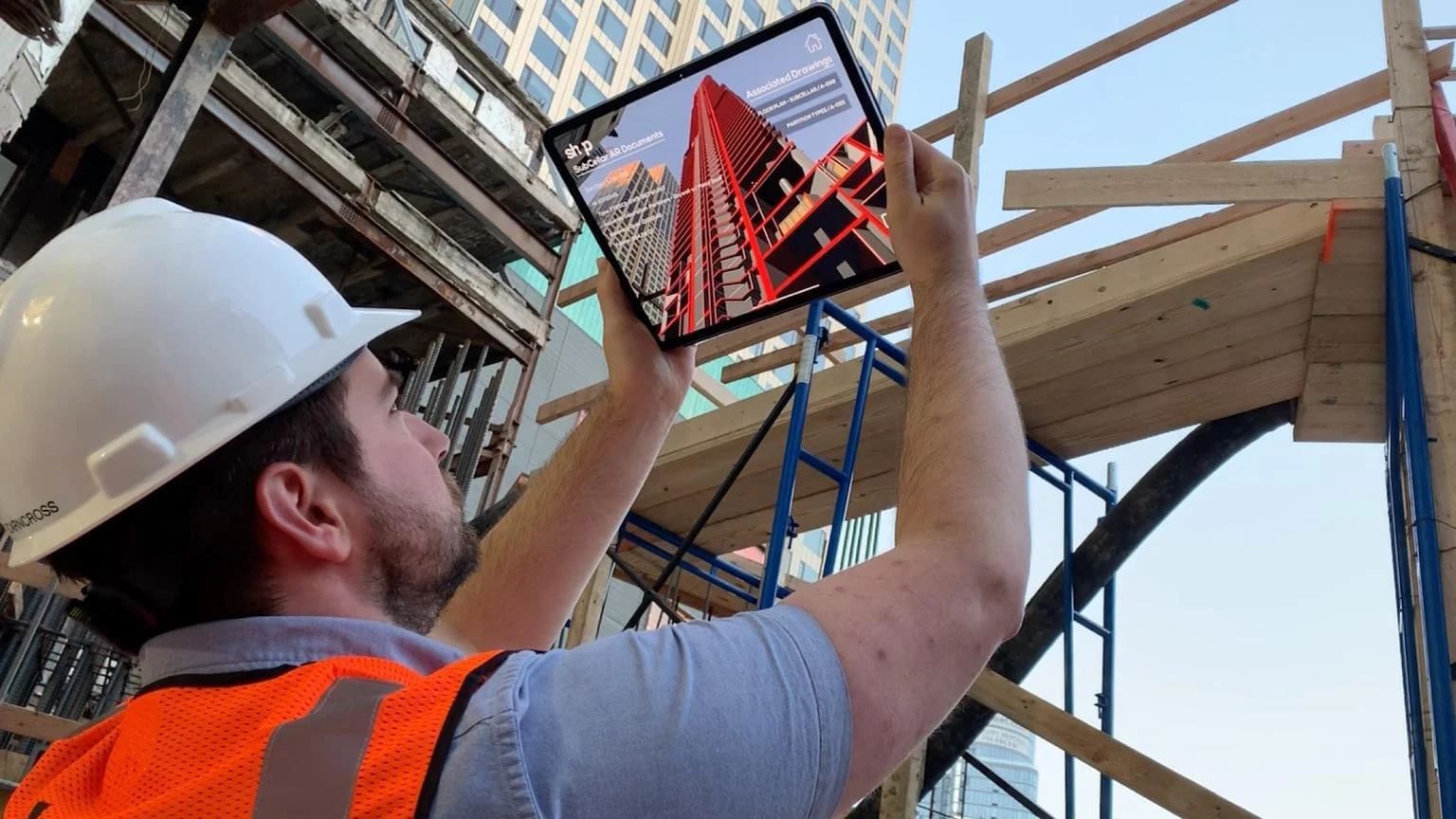
In this article, we’ll explore 10 powerful use cases where AR and VR construction technologies are transforming the future of construction, highlighting how companies like Golvez Technology are at the forefront of this innovation.
1. Enhancing Design and Visualization
AR construction tools allow designers and engineers to visualize structures in real-world environments. By overlaying 3D models onto physical spaces, augmented reality enhances the design process, making it easier to spot potential issues before construction begins. For instance, Golvez Technology uses augmented reality construction apps to help clients better understand design plans through immersive visual experiences.
2. Streamlining Project Planning
The integration of mixed reality construction solutions enables more accurate project planning. Contractors can use AR and VR to walk through virtual representations of construction sites, identifying bottlenecks and optimizing workflows. This results in more efficient project timelines and better resource allocation.
3. Improving Collaboration Across Teams
AR and VR are also enhancing communication between stakeholders. With AR for construction, architects, engineers, and clients can collaborate in real-time by interacting with virtual models from remote locations. This reduces the chances of miscommunication and ensures all parties are aligned before construction starts.
4. Enhancing On-Site Safety
Ensuring safety is always the highest priority in the construction industry.AR tools, such as augmented reality glasses for construction, offer real-time hazard detection, alerting workers to potential dangers. These glasses can display vital safety information, improving situational awareness and reducing accidents. Companies like Golvez Technology are developing advanced AR apps to monitor site conditions and ensure worker safety.
5. Facilitating Better Training Programs
Training workers in the construction industry can be challenging due to the complexity of tasks. However, VR in construction reality allows trainees to engage in virtual simulations of construction tasks. Workers can gain hands-on experience in a controlled environment, learning how to operate heavy machinery or handle hazardous materials without real-world risks.
6. Improving Accuracy in Construction Layouts
Using AR for construction during the layout phase can dramatically improve accuracy. Workers can overlay digital blueprints onto actual construction sites, ensuring that measurements and placements are precise. This reduces errors and minimizes costly rework. Golvez Technology has leveraged these tools to ensure that their clients’ projects are completed with the highest level of precision.
7. Real-Time Monitoring and Updates
One of the biggest advantages of AR construction technology is the ability to provide real-time updates. Project managers can use AR apps to monitor progress, making adjustments on the fly if issues arise. This level of responsiveness ensures that construction remains on track and within budget.
8. Virtual Client Walkthroughs
Virtual Reality offers clients the chance to experience a completed building before it’s even constructed. Using VR in construction reality, clients can walk through a virtual model of their project, providing feedback and requesting changes before construction begins. This eliminates costly design changes and ensures that the final product aligns with the client’s vision.
9. Managing Complex Installations
For complex mechanical, electrical, and plumbing (MEP) installations, augmented reality construction apps can be incredibly helpful. By overlaying installation guides and blueprints, workers can see exactly where components need to be placed, reducing mistakes. These AR tools enhance precision and reduce installation times.
10. Assisting in Facility Maintenance
Once a building is completed, AR construction technology continues to play a crucial role. Maintenance teams can use augmented reality glasses for construction to identify and troubleshoot issues in real-time. By visualizing hidden infrastructure such as wiring and piping, teams can efficiently address problems without disrupting building operations. Golvez Technology has been pioneering this approach, ensuring that their clients’ facilities run smoothly long after construction is completed.
FAQs
1. What is Virtual and Augmented Reality in construction?
Virtual and Augmented Reality in construction involves using digital tools to overlay virtual models or environments onto real-world construction sites. These technologies enhance design, visualization, and project execution by merging the physical and digital worlds.
2. How does Virtual Reality improve construction processes?
Virtual Reality (VR) lets construction teams immerse themselves in fully digital environments. Teams can explore virtual models of buildings, simulate construction tasks, and make design changes before starting physical work, which saves time and prevents costly errors.
3. How do augmented reality glasses benefit construction workers?
Augmented reality glasses help construction workers by showing real-time information like blueprints, safety warnings, and task instructions. This technology improves accuracy, keeps workers informed, and reduces the chances of on-site accidents.
4. How does AR improve safety on construction sites?
AR construction tools, like augmented reality glasses, improve on-site safety by providing real-time alerts about potential hazards. Workers are instantly notified about dangers like structural weaknesses, allowing them to take preventive measures.
5. What are augmented reality construction apps?
Augmented reality construction apps are mobile or desktop applications that leverage AR to enhance construction workflows. These apps allow users to overlay digital plans on physical spaces, monitor progress, and improve collaboration among team members.
Conclusion
The future of construction lies in the seamless integration of AR and VR technologies. These tools are transforming every stage of the construction process, from initial design and planning to on-site safety and facility maintenance. Companies like Golvez Technology are leading the charge, developing innovative solutions that make construction faster, safer, and more cost-effective. As we move toward the future of construction, augmented and virtual reality will undoubtedly become indispensable tools for the industry.
Incorporating AR for construction, augmented reality glasses for construction, mixed reality construction, and augmented reality construction apps is no longer optional but essential for staying competitive in this rapidly evolving sector.
